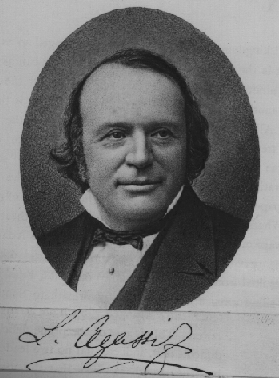I really like this story and thought I would share it. A true inspiration!
Keep learning. Where to discover your interest and how to amass relevant information are illustrated in the story of an obscure spinster woman who insisted that she never had a chance. She muttered these words to Dr. Louis Agassiz, distinguished naturalist, after one of his lectures in London. In response to her complaint, he replied: “Do you say, madam, you never had a chance? What do you do?”
“I am single and help my sister run a boardinghouse.”
“What do you do?” he asked.
“I skin potatoes and chop onions.”
He said, “Madam, where do you sit during these interesting but homely duties?”
“On the bottom step of the kitchen stairs.”
“Where do your feet rest?”
“On the glazed brick.”
“What is glazed brick?”
“I don’t know, sir.”
He said, “How long have you been sitting there?”
She said, “Fifteen years.”
“Madam, here is my personal card,” said Dr. Agassiz. “Would you kindly write me a letter concerning the nature of a glazed brick?”
She took him seriously. She went home and explored the dictionary and discovered that a brick was a piece of baked clay. That definition seemed too simple to send to Dr. Agassiz, so after the dishes were washed, she went to the library and in an encyclopedia read that a glazed brick is vitrified kaolin and hydrous aluminum silicate. She didn’t know what that meant, but she was curious and found out. She took the word vitrified and read all she could find about it. Then she visited museums. She moved out of the basement of her life and into a new world on the wings of vitrified. And having started, she took the word hydrous, studied geology, and went back in her studies to the time when God started the world and laid the clay beds. One afternoon she went to a brickyard, where she found the history of more than 120 kinds of bricks and tiles, and why there have to be so many. Then she sat down and wrote thirty-six pages on the subject of glazed brick and tile.
Back came the letter from Dr. Agassiz: “Dear Madam, this is the best article I have ever seen on the subject. If you will kindly change the three words marked with asterisks, I will have it published and pay you for it.”
A short time later there came a letter that brought $250, and penciled on the bottom of this letter was this query: “What was under those bricks?” She had learned the value of time and answered with a single word: “Ants.” He wrote back and said, “Tell me about the ants.”
She began to study ants. She found there were between eighteen hundred and twenty-five hundred different kinds. There are ants so tiny you could put three head-to-head on a pin and have standing room left over for other ants; ants an inch long that march in solid armies half a mile wide, driving everything ahead of them; ants that are blind; ants that get wings on the afternoon of the day they die; ants that build anthills so tiny that you can cover one with a lady’s silver thimble; peasant ants that keep cows to milk, and then deliver the fresh milk to the apartment house of the aristocrat ants of the neighborhood.
After wide reading, much microscopic work, and deep study, the spinster sat down and wrote Dr. Agassiz 360 pages on the subject. He published the book and sent her the money, and she went to visit all the lands of her dreams on the proceeds of her work.
Now, as you hear this story, do you feel acutely that all of us are sitting with our feet on pieces of vitrified kaolin and hydrous aluminum silicate—with ants under them? Lord Chesterton answers: “There are no uninteresting things; there are only uninterested people.”
Keep learning.
(Excerpt from a talk By Elder Marion D. Hanks, July, 1971. Ensign)
Elder Richard L. Evans taught: “There are some things you can give another person, and some things you cannot give him, except as he is willing to reach out and take them, and pay the price of making them a part of himself. This principle applies to studying, to developing talents, to absorbing knowledge, to acquiring skills, and to the learning of all the lessons of life” (Richard Evans’ Quote Book [1971], 74).


3 comments:
Thank you for following my blog, and leading me to yours. I have enjoyed this post immensely. It brings to mind a dear friend of ours who is a leading world expert n ants. He started as an engineer/farmer bu observing ants and getting so interested in them that re-made cameras before macro lenses came on the market, to created a virtually photographing microscope to discover the differences between them. The ensuing story is long but delightful.
Thanks again.
Thank you for your comment. That is amazing. I love when people get interested in something and go and do! not just watch it on TV or just read about it but actually go out and make something with their interest.
I read this quite a while ago and recently it came to mind so I had to search it out. Because I did not remember were I had read it when I found it again I had to keep it close at hand I decided to share it here.
randomly visiting kindly followers and found this brilliant post! have been tagged and am now tagging you in the anticipation more folks follow the link to you from my page and will read this story...
and details of the task ahead are on my blog, in the event you care to accept it
Post a Comment